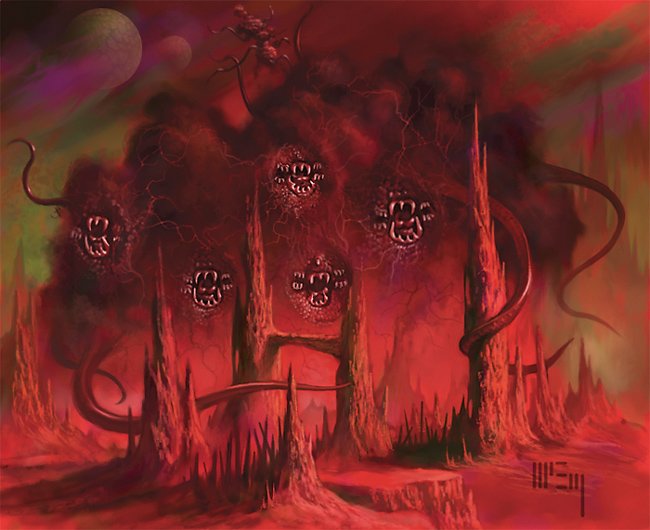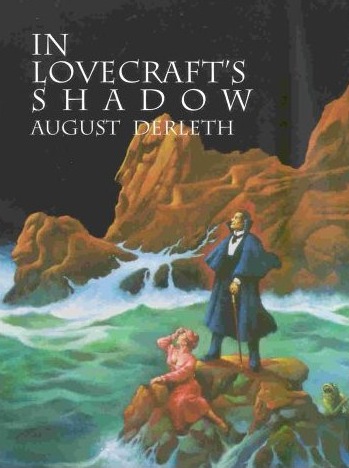Derleth Be Not Proud, Part Two: Cry ‘Havoc!’ and Let Slip the Hounds of Tindalos
Sunday, February 22, 2009
posted by Steve Tompkins
 Print This Post
Print This Post
Part One: Hypersensitive, Not Hyperborean
Part Three: Autochthonic Masses Howling and Wet-Mouthed
If you decide to write a Conan pastiche, chances are you are going to wind up having the mighty Cimmerian swear “By Crom!” a few more times than Howard did per story. You will probably increase the quotient of “skull-cleaving” blows, etc. Since the smaller details of the warp and woof of Howard’s style work so well hypnotizing you as you read, you cannot quite identify or explain them, and thus you cannot quite take aim at them to imitate them in your pastiche. To compensate, you lean more heavily on the most obvious stylistic trademarks and hope the reader will think it sounds like the real thing. This is of course the reason, also, for the way many fan Mythos pastiches turn out. As immature writers, their authors cannot account for what it is in Lovecraft’s stories that grabs them so. So they go overboard, with the most blatantly obvious feature, the Mythos names and monsters. The pitiful result only makes it all the more obvious that this was never really the secret at all.
— Robert M. Price, “Xothic Romance” (introduction to The Xothic Legend: The Complete Mythos Fiction of Lin Carter)
Think back to the fall of 1944, weeks before the Third Reich’s last great offensive got rolling in the Ardennes. That’s when Fritz Leiber, writing in the pages of The Acolyte, called for “a detailed study of the growth of [Lovecraft’s] Mythology and the background, and also an appraisal of the extent to which it helped or hampered Lovecraft’s writing.” From that perspective The Rise and Fall of the Cthulhu Mythos has been a long time coming, but earns the admiration of weird fiction enthusiasts by succeeding as an introduction to, and also an interrogation of, both the original Lovecraft Mythos (to adopt the Joshi-endorsed term) and what he memorably terms “that heroic task of literary misconstrual,” the Derleth Mythos.
Way back in The Weird Tale, Joshi complained that “the bulk of recent critical work (not merely in this field but in most others) seems so cheerless, mechanical, and obfuscatory that the reader is likely to be repelled rather than attracted to the subjects of study.” Not so the readers of this book, lucky recipients of a text that is elegantly written (although a reference to the “United States’ secession from England” is a brow-furrower), eloquently argued, and commendably inclusive. In a February 17, 2009 review of Kenneth Hite’s lively Tour De Lovecraft at his blog, John D. Rateliff identifies that book’s drawback as an assumption that readers are “thoroughly conversant with every tale Lovecraft ever wrote; if you can’t instantly recall, say, ‘The Tree’ or ‘He’ in great detail, then you’ll be a bit lost.” That’s not true of Rise and Fall (Rateliff, incidentally, provides a link to his own persuasive case for The Dream-Quest of Unknown Kadath, but also steps in albino penguin droppings by deeming At the Mountains of Madness “a tedious bore that would have been better at a quarter of its bloated length.” The preference for Dream-Quest is to be expected from a fantasy-esteemer, but “tedious bore”? Is it possible that Farnsworth Wright has pulled a Joseph Curwen on Rateliff?
Interviewing Brian Lumley, Robert M. Price once wondered if it is even possible for Mythos stories to scarify at this late date, or are they perhaps “an exercise in ‘camp,’ a happily predictable nostalgic romp through familiar territory?” Camp sashays perilously close as far back as he for whom the Mythos is named; as Dirk Mosig pointed out in “H. P. Lovecraft: Myth-Maker” (1976), Cthulhu himself is “one of the weakest and least important of the main entities — save for his immediacy.” Even that immediacy causes concern in “The Madness from the Sea,” Chapter III of “The Call of Cthulhu”: words like “slobberingly,” “sticky,” “greasily,” and the climactic “bursting as of an exploding bladder” and “slushy nastiness” all subvert the lord of R’lyeh’s dignity and near-divinity in a way his post-impact recombining doesn’t really address. Joshi seems to acknowledge this in The Weird Tale: “And yet [Cthulhu’s] mere existence is more horrifying than its actions or attributes. . .” Justin Taylor’s essay “A Mountain Walked or Stumbled: Madness, Apocalypse, and H. P. Lovecraft’s ‘The Call of Cthulhu'” expands on the superiority of Cthulhuvian dormancy as opposed to ravening-but-underwhelming activity while approaching the story as a 3-dimensional chess match of textuality and intertextuality.
Cthulhu was housebroken, rendered safe for Saturday morning cartoons, limericks, and monitor mascots, long ago. What continue to unnerve are the “new ways to shout and kill and revel and enjoy themselves,” the “holocaust of ecstasy and freedom,” those dialed in to his transmissions are promised. In Neil Gaiman’s he-kids-because-he-loves “I Cthulhu” (1986) the only non-laugh-out-loud passage is the anthropocentric one:
I sit here, dead and dreaming, watching the ant-empires of man rise and fall, tower and crumble.
One day — perhaps it will come tomorrow, perhaps in more tomorrows than your feeble mind can encompass — the stars will be rightly conjoined in the heavens, and the time of destruction shall be upon us: I shall rise from the deep and I shall have dominion over the world once more.
Riot and revel, blood-food and foulness, eternal twilight and nightmare and the screams of the dead and the not-dead and the chant of the faithful.
Rise and Fall got me thinking about Lovecraft’s core precepts; even Joshi, that committed cosmicism-enforcer, values “The Call of Cthulhu” as “an exquisite melding of cosmic horror” with “a peculiarly intimate, if intellectual, psychological horror, whereby the hapless narrator who has performed the unwitting piecing together faces a bleak life of emotional devastation because of his harrowing realization of what Cthulhu is and is capable of.” So the intimate is tolerable if it is intellectual…well, here we must agree that “The Call of Cthulhu” would be in no way improved by the insertion of scenes devoted to the narrator’s marital difficulties or his oldest son’s becoming a disciplinary problem at the local middle school. But it seems to me that a subtext of Joshi’s survey is the extreme difficulty of barring people and their psyches from Mythos fiction.
Joshi is sica-sharp; the conceptual carnage in his dissection of the splatterpunks for The Evolution of the Weird Tale is gorier than the movement in question ever managed in its Schow-and-tell exhibitionism. Of poor “Lavinny” Whateley he observes: “There is, of course, some reason to wonder why so apparently powerful an entity as Yog-Sothoth would choose this backwoods albino as the Mary to usher in a new age of terror.” Nor is the “celebrated catalogue of names” in the Akeley-to-Wilmarth letter of “The Whisperer in Darkness” exempt from accountability:
One almost wishes that Lovecraft had not written this passage, for it seems to have provided the impetus for later Mythos writers to spin out their own catalogues of meaningless names as if their mere citations could create horror. What Lovecraft is attempting to do here is to tantalise rather than to terrify: he is suggesting that there is an entire realm of existence behind or beyond common life about which we know little.
We wouldn’t want to be Tantalus in our afterlives, but tantalization in our reading lives is often perversely pleasurable and disproportionately memorable. Unfortunately, the virtues of reticence, of lacunae, have been lost on too many Mythos latecomers: Lin Carter was a Thou shalt not suffer a lacuna to live single-purpose synthezoid, the theme song of whose Mythos-work should probably have been the Beatles’ “Fixing a Hole.”
At times even Lovecraft isn’t Lovecraftian enough. For Joshi the cosmicism-challenged “Thing on the Doorstep” is “merely a kind of supernaturalised domestic tragedy. It is no accident that the portrait of Asenath has something of Lovecraft’s mother and something of his ex-wife Sonia Greene in it.” But there is no “merely” about the loss of family, and identity, in Fritz Leiber’s “The Terror from the Depths”: “What Leiber has done here — and really, throughout his work — is to break down the simple dichotomy of external horror and internal horror, showing that both can be, and usually are, fused into an enigmatic and chilling union.” I’m reminded of Joshi’s praise for “the delicate character portrayals — which fuse the human and the cosmic, the inner and the outer, in an inextricable union” in Ramsey Campbell’s Midnight Sun (1990). Or Stephen King’s observation, in his recent story “N.,” to the effect that “When a man begins to think the only purpose served by his perception is to mask the knowledge of terrible other worlds — that is a crisis of the psyche.” The anthropic principle may be insufficiently cosmic, and comic from a lengthened Lovecraftian POV, but it’s damnably difficult to shoo away for long.

Joshi is also receptive to C. Hall Thompson’s “Spawn of the Green Abyss” (WT, Nov. 1946), specifically “the fusion of Lovecraft’s cosmic horror with the intimate domestic drama of the love affair between Cassandra Heath and James Arkwright. This is handled with genuine sensitivity and skill, and we feel profound emotion at the tragic denouement.” So love affairs are permissible if Stephen King isn’t playing matchmaker. As per Joshi “Robert Weinberg reports that August Derleth demanded that Thompson stop using elements from Lovecraft’s work in own work, although Weinberg presents no evidence to this effect.” He credits Stefan Dziemianowicz with pointing out that Thompson ultimately exchanged the Old Ones for the Old West in three 1950s novels. I mentioned my interest in this alleged territorialism on Derleth’s part to Morgan Holmes, and he will be posting his findings at the REHupa blog.
Joshi helpfully quotes from Farnsworth Wright’s thumbs-down on “The Horror from the Lake,” a letter new to me which, amazingly, was never cited by the Herronian prosecution or the Schweitzerian defense in the multi-issue Lion’s Den trial of Wright in TC the print journal. After mentioning that the story was too close to Frank Belknap Long’s “The Horror from the Hills” for comfort, Wright continued
But a more serious objection to this story is the fact that you have lifted whole phrases from Lovecraft’s works, as for instance “the frightful Necronomicon of the mad Aranb Abdul Alhazred,” “the sunken kingdom of R’lyeh,” “the accursed spawn of Cthulhu,” “the frozen and shunned Plateau of Leng,” etc. Also you have taken the legends of Cthulhu and the Ancient Ones directly out of Lovecraft. This is unfair to Lovecraft. Robert Louis Stevenson once said that in the days of his apprenticeship to the writing craft he “had played the sedulous ape” to different authors in turn. But you have not merely aped Lovecraft in this story — you have even lifted his wording. My admiration for Lovecraft’s writing amounts almost to idolatry, and I cannot allow such imitations in Weird Tales. It is all right to use the legends as Howard and Smith have used them — a mere allusion to them; but your usage oversteps the bounds of propriety.
Where has this Farnsworth Wright been all my life, or at least that portion thereof given over to studying the history of weird fiction? Enlisting Stevenson in order to call Derleth a sedulous ape, differentiating the playful allusiveness of REH and CAS from the Wisconsinite’s sincere but stumblebum form of flattery, proclaiming his idolatrous regard for HPL’s work — one could almost believe the editor had just been shaken by a visit from a purist posse of time-traveling 1970s and 1980s Lovecraft scholars, and that his hair-trigger rejection-reflex would twitch no more. Unfortunately, Wright’s righteousness was ephemeral; a paragraph later, we’re reminded that Pharnabazus encouraged simian sedulousness by publishing “The Lair of the Star-Spawn” in the August 1932 WT.
Joshi often stands back and refrains from interfering as Derleth and that singer of strained songs Brian Lumley hit themselves in the face with custard pie after custard pie. Case in point: Derleth’s objection to Zadek Allen’s monologue in “The Shadow Over Innsmouth” as overlong:
Derleth later suggested that he himself be allowed to revise the story for Lovecraft! Lovecraft tactfully declined, but decades later Derleth got his chance to write “The Shadow over Innsmouth” the way he apparently thought it should have been written. Whether anyone will think “Innsmouth City” a better story than Lovecraft’s is open to question.
In fairness to Joshi’s own fairness, he is quite generous to “The Lamp of Alhazred,” with its rejuvenated HPL shorn of his shackles and affirmation of “the deep bonds of friendship that Lovecraft and Derleth [created] purely through correspondence.” Dr. Laban Shrewsbury, however, is sued for Mythos-malpractice; I wonder if Derleth knew Henry IV Part One well, and if it occurred to him that some of us might commandeer Falstaff’s phrase “a long hour by Shrewsbury clock” to describe the ordeal of following the good doctor around. It isn’t so much that Derleth saw not as through a glass darkly (and cosmically) but through a stained glass window; even that might have been endurable if following the superimposition of his Catholicism he had not then failed miserably to put Catholic motifs to work in productive or provocative ways — here the contrast with Tolkien’s Silmarillion is, well, damning. The heights and depths of Revelations and Paradise Lost were as far out of his reach as Betelgeuse, the star he annexed for the Mythos. And Derleth must answer for the Derleth-spawn, those devotees of, in Dan Clore’s words, a “cliché plot that derives from the work of Lovecraft’s imitators — and those who in turn have imitated the imitators rather than the original, having found in them an example of ‘how to do it.’ In short, imitation has eclipsed the original, becoming not only a model for the method of imitation, but for the material to be imitated as well.”
Brian Lumley’s “lost city of G’harne” and “monstrosity Shudde-M’ell” speak, clumsily, for themselves. A friend told me that Stephen R. Donaldon’s cavewight Drool Rockworm came in for some mockery online last year, but at least “Drool Rockworm” is amusing to say or read. “Shudde M’ell” (cod-Celtic?) is so tragic the Old Ones, the real Old Ones, weep ichor-tears. The Manitou (1975) by Graham Masterton is “a wretched piece of hash,” the sequels to which Joshi has lacked “the masochism to read.”
Familiar to TC-readers-personages like Charles Hoffman and John D. Haefele put in stints as Basil Rathbone crossing swords with Johi’s Errol Flynn on the castle staircase. So many megatons are expended on making the rubble of TC’s de facto poet-in-residence Richard Tierney’s The House of the Toad (1993) bounce that we could almost conclude that he had provided Joshi with the equivalent of Lovecraft’s “whimsical letter to Robert Bloch in late April 1935 authorising him ‘to portray, murder, annihilate, disintegrate, transfigure, metamorphose, or otherwise manhandle the undersigned.'” Oh, Joshi savors the “rather piquant strain of misanthropy” discernible in Tierney’s poetry and honors that 500-word Shot Heard Round the Cosmos “The Derleth Mythos” but The House of the Toad is “quite frankly, not the work of a professional writer but the work of an amateur, a fan. Its characters are stiff and mechanical, its action clumsy and predictable, its prose wooden and uninspired, and its attempt to endow the contrived action-adventure plot with philosophical meaning is catastrophically inadequate.”
At least one pulphound and Howardist of my acquaintance will seethe at this: “Lovecraft and [Hugh B.] Cave had corresponded briefly and somewhat acrimoniously in the early 1930s; evidently Cave took offence at Lovecraft’s anti-commercial attitude and felt that cheap pulp hacks like himself should only be engaged in making as much money as possible from the manufacturing of quasi-literary products for the delectation of an ignorant public. He certainly fulfilled his own aesthetic principles to the letter.” But neither Tierney nor Cave offends as does Michael Shea, whose The Color out of Time (1984) in Joshi’s estimation “soils and ruins a masterful Lovecraft story by depriving it of all is sublety and nuance.” After castigating the castigation-meriting novel Joshi adds, “one only hopes that Shea (b. 1946) has done better work in the decades since. It would be hard to do worse.” A less venomous version of that sentence might have acknowledged that Shea’s career went to hell, rewardingly, with Nifft the Lean (1982), which won a World Fantasy Award, and the follow-up antiheroic fantasies The Mines of Behemoth (1997) and The A-Rak (2000).
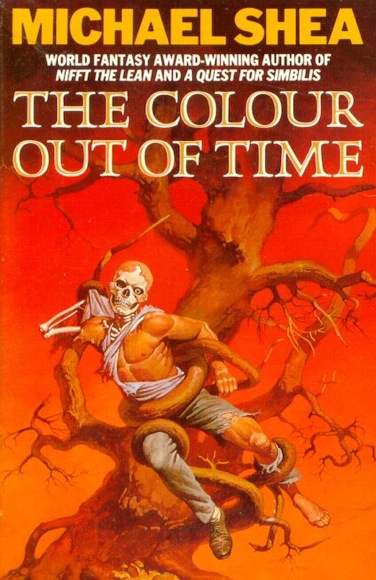
It’s no secret that Robert M. Price is more in tune with the ludic and jocose aspects of the Mythos, where Joshi cracks open the bones of every story in his hunger for philosophical marrow. Of Price’s assertion that Lovecraft exhibited precocious Derlethism in The Dream-Quest of Unknown Kadath, what with the providential intervention by Nodens, he snaps “[Randolph] Carter’s delivery is largely of his own making, and it appears that Nodens is merely acting as a kind of cosmic cheerleader.” Not unlike Price himself; Joshi is not without his foibles, but the former’s ability to run with the hares and hunt with the Tindalos-pack is awesome to behold. He can write in one place that “Derleth played taxidermist and taxonomist. He killed and stuffed the Mythos so as to install it safely and motionlessly on its pedestal in the museum exhibit,” but lament in another, with regard to Lin Carter’s cobbling-together of 5 stories as The Terror Out of Time, a “novel” which Arkham House cold-shouldered, as follows:
This was a doomed effort, since following the passing of August Derleth, Arkham House seemed to repeat the fate of poor Amos Tuttle, undergoing a horrific transformation after death. Arkham House, it seemed, was no longer very keen on publishing, or even tolerating, that Cthulhu Mythos stuff. It was as if the American Bible Society had kept their name but decided to quit wasting their time publishing scripture!
To extend Price’s comparison, the new testaments in Rise and Fall come from Fritz Leiber and Ramsey Campbell. I’m not entirely sold on Joshi’s contention that Leiber’s “The Sunken Land” is “largely a rewriting of ‘The Call of Cthulhu'” — everything that rises from the seabed doesn’t necessarily converge — but he can’t praise “The Terror From the Depths,” Leiber’s full-fledged Mythos novella for The Disciples of Cthulhu (1976) enough, and his insightfulness when a major work like this one engages him fully is like watching lightning illuminate high places by night. The Mythos has transplanted itself to the golden West, even if Leiber’s protagonist Georg Reuter Fischer claims to be surfeited with the “sandy, spongy, salt-soaked, sun-baked hills” around his southern California home: “I have limped too long along their crumbling rims, under their cracked and treacherous overhanging sandstone, and through the months-dry streams that thread their separating canyons.” Soon the pathetic fallacy is working on him: “I saw everything in terms of transiency, decadence, and decline — as if the times were as rotten and crumbling as the hills which obsessed me.” Gazing back at the Thirties from the Seventies, Leiber seems to be channeling Oswald Spengler and J. G. Ballard as much as Lovecraft:
As I looked from my hilltops down on bustling Los Angeles always a-building, I placidly thought of the future days when little bands of blustering, ill-kempt barbarians will walk the streets of humped and pitted asphalt and look upon each of its ruined, many-purposed buildings as just another “hut,” when high-set Griffith Park Planetarium, romantically rock-built, highwalled and firmly bastioned, will be the stronghold of some petty dictator; when industry and science will be gone and all their machines and instruments rusted and broken and their use forgotten. . .and all our works forgotten as completely as those of the sunken civilization of Mu in the Pacific, of the fragments of whose cities only remain Nan Modol and Rapa Nui, or Easter Island.
Leiber’s Pacific is more than just a Cthulhuvian lake, and its beauty and terror are at his beck and call: “Under the greatest of oceans, earth is a rainbow web and Nature is a spider spinning and walking it.” One character’s question — “It is strange, is it not, to think of an investigation of dreams having geological repercussions?” — seems to anticipate the later and Lovecraft-influenced weird fictionist Caitlín R. Kiernan.
The plentiful inside jokes –warned against Weird Tales covers, our hero determines that “their nude female figures, by some sentimental woman artist,” are “decorously sleek pastels,” the activities depicted in which are “playfully perverse — never interfere with the Outside premonitions and perturbations.
In his intro to New Tales of the Cthulhu Mythos (1980) Ramsey Campbell says of Basil Copper’s “Shaft Number 247” “One of our tales hints at the ultimate event of the Mythos without ever referring to the traditional names.” Both a strength and a debility of Robert Bloch’s Strange Eons (1979) is that the novel more-than-hints at the endgame while referring to almost nothing but the traditional names. Bloch has been thinking about his friend and mentor:
Scholars suggested that an aversion to seafood may have led him to write fantasies such as “The Shadow over Innsmouth.” But maybe it was the other way around — what he wrote was the truth that came to him in dreams, and it was his fear and hatred of the sea-creatures that prompted his aversion to seafood in waking life.
Kay nodded to herself. If true, the pattern was all too clear. Those same scholars tried to link his Atlantic tale with his physical reaction to low temperatures. But couldn’t that reaction be psychosomatic? Couldn’t it be that frightening dream-glimpses of Kadath in the Cold Waste resulted in a dread of cold extending into his daily existence?
And his much-debated dislike of “mongrel” infiltrations from Europe, Asia and Africa — how much of this stemmed from dreams of hybrid presences spawned by the mingling of men and aliens? How much came from knowledge of those who secretly worshipped the entities he encountered beyond the wall of sleep?
Perhaps his “mongrels” were symbolic. And his preoccupations with ancient houses, ruins and graveyards, with the creatures of superstition emerging from such settings — suppose this was not based on a fear of death but on a fear of certain forms of life? Because the dreams told him that death is not the end — there are things that continue to exist in an ageless half-alive state, things that can be summoned forth again. That is not dead which can eternal lie. . .
Kay frowned. Was this how it had happened? Did Lovecraft dream true?
Turning HPL into one of the artistic receptors in “Call of Cthulhu” is clever, but, fatally, Bloch is much more interested in the earlier weird fictionist (who remains just barely offstage), than in any of the new characters he creates, all of whom dangle like ink-puppets at the mercy of a distracted puppeteer.
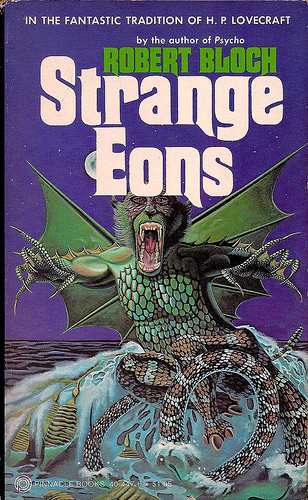
Strange Eons wears its Nyarlathotepian influence on its sleeve, but Bloch’s sleeve and the rest of his enemble amount to a knock-off. The novel’s weirdest passage, before the Mythos-enacting wish-fulfillment of the last page, is one that cosmicizes the postal service , a metaphor that pushes the envelope in new ways:
But perhaps most people, rich and poor alike, lived in sealed envelopes; narrow, almost two-dimensional confines that constricted their vision and afforded no glimpse of the world outside or what was actually happening to them. Sped through life by mechanical means they couldn’t imagine or comprehend, sorted and handled by entities whose very existence was undreamt of, they traveled through space and time to unguessed destinations.
But now, outside the protection of the envelope, the narrow view widened, revealing limitless vistas, and the paper-thin sheet on which sanity is lettered was exposed to great winds blowing from gulfs beyond the stars.
Joshi approves of Bloch’s big finish: “Such a cheerless ending would be unthinkable to many modern weird writers, who feel obligated to restore bourgeois normality at the end regardless of the havoc their monsters have caused.” A couple of Howardists have suspected that Joshi’s own personal Necronomicon, his much-consulted grimoire, must be Das Kapital; it’s hard not to conclude that for him the middle class isn’t even of middling interest.
Which brings us to that Great White (and Bourgeois) Whale, the leviathan with so many of Joshi’s harpoons still stuck in his flanks, Stephen King. Rise and Fall ignores King’s “Crouch End,” which first appeared in New Tales of the Cthulhu Mythos (1980) and is now available in Nightmares & Dreamscapes (1993. Two London bobbies discuss the odd neighborhood they’re assigned to:
“What about Lovecraft? Ever read anything by him?”
“No,” Farnham said. The last fiction he’d read for pleasure, in fact, had been a small Victorian Era pastiche called Two Gentlemen in Silk Knickers.
“Well, this fellow Lovecraft was always writing about Dimensions,” Vetter said, producing his box of railway matches. “Dimensions close to ours. Full of these immortal monsters that would drive a man mad at one look. Frightful rubbish, of course. Except whenever one of these people straggles in, I wonder if all of it was rubbish. I think to myself then — when it’s quiet and late at night, like now — that our whole world, everything we think of as nice and normal and safe, might be like a big leather ball filled with air. Only in some places, the leather’s scuffed almost down to nothing. Places where the barriers are thinner. Do you get me?”
King also works in Lovecraftian graffiti:
And the names on the signboards became progressively stranger, even lunatic, at the very least, unpronounceable. The vowels were in the wrong places, and consonants had been strung together in a way that would make it impossible for any human tongue to get around them. CTHULHU KRYON read one, with more of those Arabic pothooks beneath it. YOGSOGGOTH read another. R’YELEH said yet another. There was one that she remembered particularly: NRTESEN NYARLAHOTEP.
Despite one vintage effect in which “A strangely painted six-car train — it was bone-white” careens overhead like “a crazy steel bride rushing to meet her groom,” the story can’t begin to compete with weird fiction written by actual Londoners. King did better when he recently returned to the borderlands of the Mythos by way of Arthur Machen’s “The Great God Pan.” OCD, always a lurking fear in Lovecraft’s work, is front-and-center as “cramps in the mind, or a disease of the imagination” in “N.,” which can be found in King’s latest collection Just After Sunset (2008) and has also been adapted into a hybrid comic book/animation/dramatization online series/DVD by Marc Guggenheim and artist Alex Maleev with considerable success.
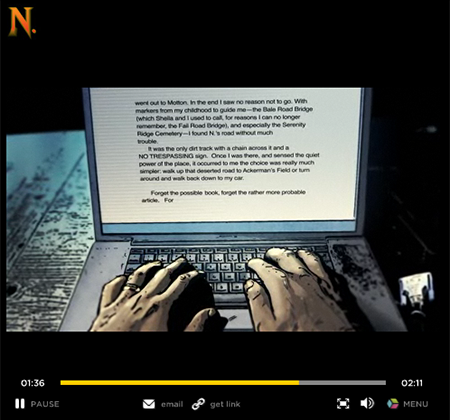
Obsessive-Compulsive Disorder is symptomatic of an awareness that reality is thinning and must be patched or restitched; a doctor treating the first of several sufferers in King’s story visualizes it as “invisible birds” that “[roost] all over N., pecking away his flesh in bloody nibbles.” The cosmicism creeps in on little cat-feet as N., an accountant, amateur photographer (and Castle Rock resident) reflects that the Androscoggin River has “an old smell.” He very quickly is forced to the realization that Ackerman’s Field, which overlooks the river, is a cell-door of sorts. Were that door to open, “the sky would turn black, and it would be full of new stars and insane constellations.” An indentured servitude of OCD behaviors begins, and during repeat visits to the field and its standing, staring stones N. notices a carrion-reeking breeze, corrupted bushes (“They were ill-formed things, somehow hard to look at’) and chants that presage “a whole chain of ruined universes behind that force, stretching back untold eons in time like monstrous footprints.” One of the chanted names, “Cthun,” is as close as King comes to Mythos nomenclature, but I would nominate “N.,” which doesn’t end but rather begins anew, as one of the best affiliated stories written by someone other than Stanley Sargent or W. H. Pugmire in years.

Myself, I often chafe against the conventional wisdom that Ramsey Campbell’s quantum leap from The Inhabitant of the Lake and Less Welcome Tenants (1964) to Demons by Daylight (1973), arguably the most impressive in horror fiction, was a leap away from Lovecraft. On the surface, yes; but Campbell’s Lovecraftsmanship went underground, became psychotropic. But Joshi’s remarks on Campbell in The Rise and Fall of the Cthulhu Mythos are as astute as his past work has led us to expect; I particularly admired his comment, in connection with “The Franklyn Paragraphs” that the conceit whereby desperately pleading words spontaneously self-print on the page of an opened book is “a vast refinement of the Lovecraftian narrator’s penchant for scribbling until the bitter end.” Campbell should be a model for the Mythos-minded in his posing of the question, how many of the trappings of the Mythos can a weird fictionist eschew and still expand the canon? By limiting the Mythos to a twinge, tinge, or taint-to-be-welcomed, a la the title of a Stanley Sargent collection, lowering the volume to that of Erich Zann-music in the background, the author limits himself not at all.
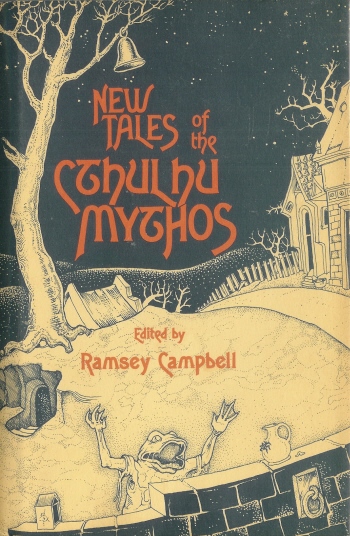
Joshi returns to Campbell again and again, concluding that The Darkest Part of the Woods (2003) contains “not a single wasted word, not a single sentence or passage that does not in some way contribute to that ‘unity of effect’ which Poe believed was solely the province of the short story.” Could we interview Joseph Curwen, he would profess himself honored to have been awarded a cameo in this triumphant novel.
The sylvan interludes of Darkest Part are so scarifying that Ents would curl, themselves, as much as their not-especially-bendable selves allowed, into the fetal position; global deforestation begins to seem like a prudent response. In one set-piece even the deepest woods yield to Deep Space:
Once he glimpsed an eyeless form that glided from planet to planet and held each in its many-clawed wings while it absorbed the life-force of entire civilisations of creatures whose shapes he was grateful to be unable to distinguish. Once he saw a massive globe so dark no star could illuminate it, which roved in search of inhabited worlds, distorting them and their denizens before it engulfed them to the sound of countless pleas and screams lost in the void. Once, before he contrived to think his desperate way back to his room, he had to watch a member groping out of the limitless blackness to clutch at a whole solar system of planets, using appendages nothing should possess, and lift its catch towards a face Sam barely barely managed not to discern in any detail, a presence whose glee felt like the end of all life.
As so often in Campbell’s work, occluded sight is the last guarantor of sanity.
Surprisingly, unless his deadline precluded it, Joshi does not discuss The Grin of the Dark (2007, no relation to this site’s founder), initially an apparent companion to Ancient Images (1989) and Theodore Roszak’s Flicker (1991) in its preoccupation with the dark underside of cinema as an artform. The narrator, who aspires to produce a definitive monograph on Tubby Thackeray, a music hall vet turned silent film star of the Fatty Arbuckle school, rediscovers Thackeray’s lost magnum opus, in which the excessively grinning star also seems to be mouthing what is almost a Mythos primer:
The portal once opened can never be closed. The infinite shall be contained beyond the portal. The known shall never be unknown, nor shall the unknown be. All that cannot be shall be. All shall be revealed to he who searches. The search shall choose the searcher. The doors open to him, and all doors are one. He who opens the portal is the portal.
The searcher, we learn, “shall hear the voice of the dark, which is infinite laughter.” And all of this not only points back to the Necronomicon-passage in “The Dunwich Horror” but sideways to the reader’s next Googling. Campbell surpasses his patented genius for passive-aggressive conversations and chronicles a nightmarish flame war in which pyrrhic victories give way to ever more humiliating defeats and it dawns on the protagonist that his opponent is distorting his arguments with more-than-human malice: “Everything’s true on the net, and it lets anyone use a mask who wants to.”
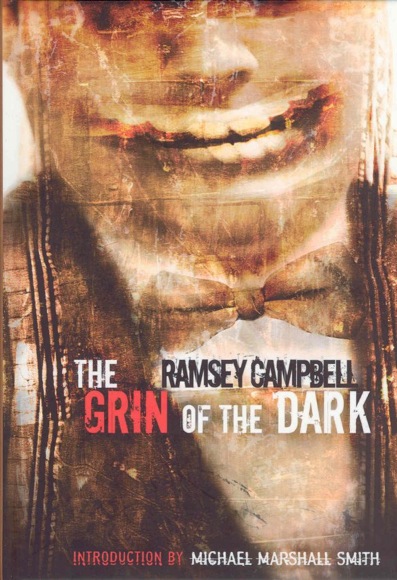
At one point a character chances upon a site where he encounters “fat naked shapes crawling slug-like over one another.” He can’t be sure if “they’re babies or some even more primitive life form,” but they grin like nobody’s business, and we’re a misstep closer to Campbell’s observation that cyberspace is “infinite, but most of infinity is darkness, and chaos breeds in the dark.”
Of W. H. Pugmire, best represented by The Fungal Stain and Other Dreams (2006) and Sesqua Valley and Other Haunts (2008) Joshi comments “Plotting is not a strong point.” Fair enough; in Pugmire’s stories compulsion and consummation and actualization-through-annihilation often do the work of plot. This author, for whom Lovecraft is “the font that never dries,” sets the eminently potable water from that font before readers in vessels all his own, creating the most Arcadian Mythos fiction ever written. His Sesqua Valley is “a thing of impiety. A thing of special properties,” where breezes from the faerie lands forlorn of Wilde, Machen, and Chambers blow. The notes that play differ from Lovecraft’s: siblings attuned to one another thrive in “a realm of shared memory,” and a narrator assures us: “I listened to that ageless wasteland wind as the antiquity of the place kissed my soul with spectral speculations.”
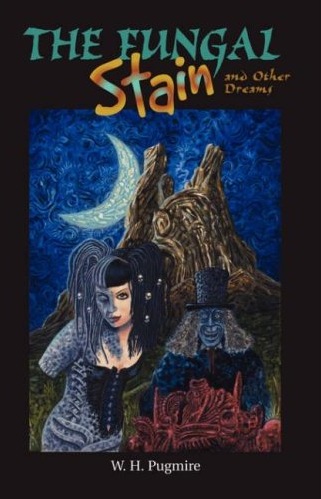
“The Imp of Aether” is rather post-partisan in the context of Mythos doctrinal disputes in that, while dedicated to “ye memory of August William Derleth,” a character refers to “the idiotic notion that Great Old Ones represent terrestrial elements, as if these cosmic creatures could be molded by corporeal law or understanding.” In “The Child of Dark Mania” a woman like a more articulate Lavinia Whateley gives birth to a sort of “Wilburina” who in turn yearns for reunion with her “unhallowed paternal essence.” Best of all is “the Hands That Reek and Smoke,” wherein Nyarlathotep is a darker-than-dark muse:
I saw the hooded figure composed of soot and shadow. From deep within its hood I could discern the shifting features of a regal and inhuman façade.
Again and again, Pugmire’s inhuman entities are limned not with diffidence, but a distinctive delicacy. His current colonization of the novelette as opposed to the short story is, like Thomas Ligotti’s colonization of the novella in My Work Is Not Yet Done, glad tidings for weird fiction.

Caitlín R. Kiernan, whose better-than-the movie Beowulf novelization brought her to this site’s attention here, wears her Lovecraftian influences lightly and lithely, and has taken over from Brian McNaughton as kennel-master of Lovecraft-indebted ghoul-packs. Joshi says in passing that “the ghoul theme is only tangentially related to the Mythos,” but the tangential might harbor the most potential nowadays. With her vertebrate paleontologist training, she’s unprecedentedly qualified to uncover eldritch skeletons in the earth’s closet. Novels include Low Red Moon (2003), Murder of Angels (2004), Daughter of Hounds (2007), and due this fall, The Red Tree, and her short fiction has been collected as Tales of Pain and Wonder (2000), From Weird and Distant Shores (2002) and A Is for Alien (2009). My one reservation, which will not keep me from keeping up with her work, is that her characters have been known to lick, and go on licking, their wounds for purposes that seem to have as much to do with Narcissus as Asclepius.
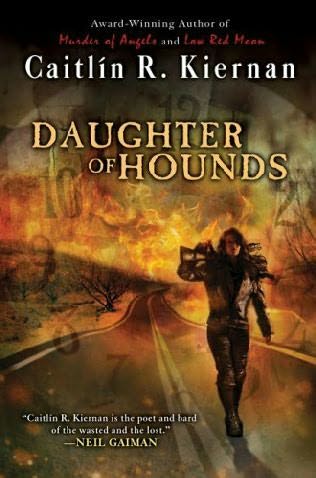
Rise and Fall is not without blind spots the size of khanates. I’m startled that David Drake’s “Than Curse the Darkness,” a blacker-than-black tapestry proving yet again that, as Drake’s friend Karl Edward Wagner put it, the colors of Darkness are no monotonous hue, goes unmentioned. The story (first published in the Ramsey Campbell-edited New Tales of the Cthulhu Mythos, 1980, and then in the Drake collections From the Heart of Darkness, 1983, and Balefires, 2007) daringly claims the Belgian Congo for the Mythos, as Conrad’s Mistah Kurtz and Nyarlathotep seem to stare into each other’s abysmal absences of anything resembling a soul.
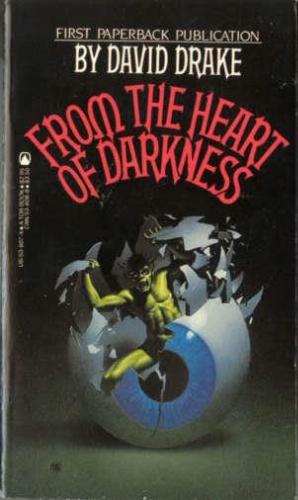
Joshi might not consider “In the Black Mill” (1997) a Mythos story. As its author August Van Zorn (1899-1963, real name: Albert Vetch) did not actually exist, it became necessary for Michael Chabon to invent him. The aim is not really to hoodwink anyone, but the Van Zorn construct takes us all the way back to Lovecraft’s enjoyment of the hoaxster aspect of the well-told weird tale. A Chabon website generously offers a list of known Van Zorn stories, including “Blacker Than Midnight, And More Foul, ” “The Eaters of Men,” “To the Nethermost Shore,” “The Teeth of the Years,” “the Gnashing of Ancient Jaws,” and my favorite, “A Shark in the Sea of Time.” We learn that Van Zorn did not, like C. Hall Thompson, run afoul of Derleth, and was rewarded with the 1969 Arkham House volume The Abominations of Plunkettsburg and Other Stories, the title page of which further tantalizes us:
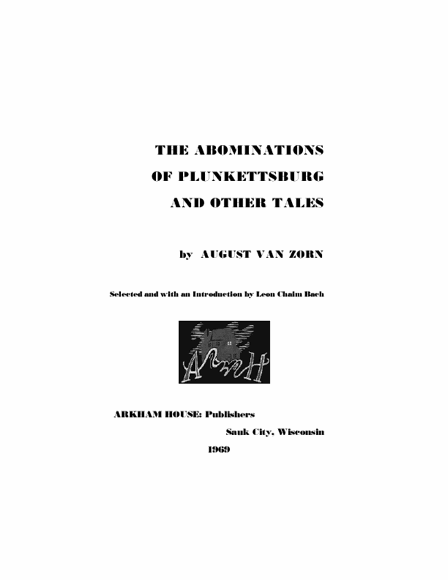
The “budding or full-blown Vanzornian” is helpfully directed to HPL, REH, and CAS links, although Van Zorn is said to surpass 2 of the 3: “all the erudition of Lovecraft without the hysteria and tin ear, all the richness of imagery found in Clark Ashton Smith without the love of gaudy display.” He began “life” as an incidental figure in Chabon’s novel Wonder Boys (1995): “When his work was going well, he could be heard in every corner of the sleeping hotel, rocking and madly rocking while he subjected his heroes to the gruesome rewards of their passions for unnameable things.”
Van Zorn’s narrative voice is an ingenious contrivance, that of an educated man not quite writing down to a pulp readership. “In the Black Mill” conducts us to Plunkettsburg in the fall of 1948, a “low, rusting little city, with tarnished onion domes and huddled houses, drab as an armful of dead leaves strewn along the ground” nestled un-tenderly beneath the Yuggaheny Hills, in “the broad and gloomy valley of the Miskahannock.” Chabon’s nomenclature-fun continues with names like Carlotta Brown-Jenkin and Philippa Howard Murrogh. The area is haunted by its original inhabitants the Miskahannocks, of whom one academic states that “the culture of the builders of the Plunkettsburg Mounds, at its zenith, had expressed to a degree unequaled in the Western Hemisphere up to that time, the aestheticizing of the nihilist impulse.” Plunkettsburg’s principal industry literalizes William Blake’s well-known image of “dark satanic mills,” chewing up workers and spitting them out as amputees of varying diminishment. Yes, Van Zorn is a keeper, and I only wish we could dream a Hippocampus Press volume of his correspondence with Lovecraft into being while Michael Chabon forgivably attends to his own career. “In the Black Mill” works as a jeu d’esprit, but also a delightfully nasty encounter with “an evil, at once ancient and machine-age”:
We are all waiting and watching, as the women of Plunkettsburg, the servants of Yuggog, pass noiselessly among us in their soft, horrible cloaks stitched from the hides of dead men, tapping on the shoulder of now one fellow, now another.
The Rise and Fall of the Cthulhu Mythos is a must-read, and not just for Miskatonic alumni and would-be matriculaters everywhere. For anyone driven to write horror and looking to wade from the shallow end of the pool out to where the genre gets deeper, Joshi’s book belongs on a short list with Supernatural Horror in Literature and Jack Sullivan’s Elegant Nightmares: The English Ghost Story from Le Fanu to Blackwood (I wish I could add King’s Danse Macabre, but it’s just too idiosyncratic and all over not one but several maps).
In a December 28, 2008 comment on a post about The Rise and Fall at the Grim Reviews site, W. H. Pugmire let slip that Joshi “has just edited his own collection of Lovecraftian fiction, Black Wings, which is currently seeking a publisher.” May it find one soon; Douglas Winter has crossed over from reviewing to doing on occasion, and Joshi has incontrovertibly done his homework on how not to write a weird tale. Although there will be those who hope that the Black Wings molt, the opportunity to read him practicing what he has for so long preached can’t help but be fascinating.
CORRECTION: Martin Andersson set me straight on Black Wings, which as it turns out is a Joshi-edited Mythos anthology to be brought out by PS Publishing in the UK, not a fictioneering foray by Joshi himself. The contributor-roster is here and includes Caitlín R. Kiernan, TC regular Darrell Schweitzer, Brian Stableford, and none other than Michael Shea.
